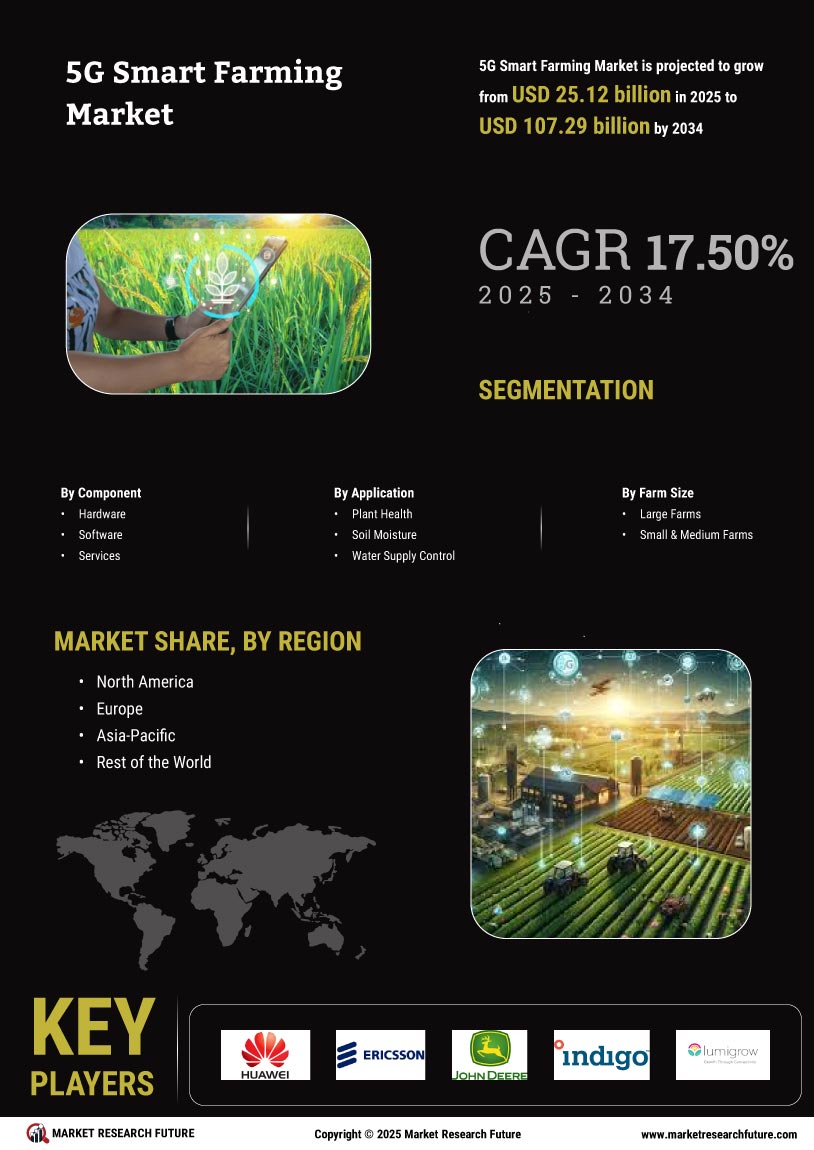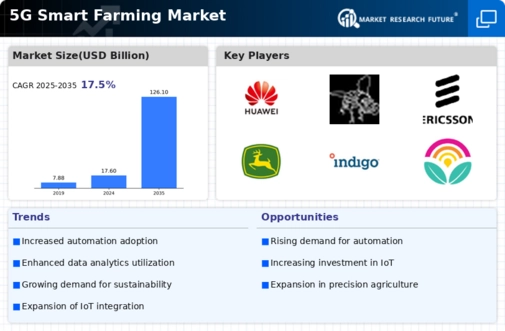Leading market players are investing heavily in research and development to expand their product lines, which will help the 5G Smart Farming market, grow even more. Market participants are also undertaking a variety of strategic activities to expand their footprint, with important market developments including new product launches, contractual agreements, mergers and acquisitions, higher investments, and collaboration with other organizations. To expand and survive in a more competitive and rising market climate, the 5G Smart Farming industry must offer cost-effective items.
Manufacturing locally to minimize operational costs is one of the key business tactics used by manufacturers in the 5G Smart Farming industry to benefit clients and increase the market sector. In recent years, the 5G Smart Farming industry has offered some of the most significant advantages to the agricultural sector. Major players in the 5G Smart Farming Market, including Huawei, Dronetech, Ericsson, John Deere, Indigo Ag, LumiGrow, Raven Industries, DroneDeploy, and Vodacom are attempting to increase market demand by investing in research and development operations.
Huawei, a subsidiary of Huawei Investment & Holding Co Ltd, is a prominent provider of information and communication technology (ICT) infrastructure and smart devices. The company boasts a diverse product portfolio encompassing laptops, tablets, routers, wearables, headphones, enterprise wireless products, optical transmission and access products, networking products, and cloud and computing solutions. Huawei also delivers services and software tailored for carrier networks and smart services for enterprises. Its clientele spans various industries, including education, finance, healthcare, internet services, manufacturing, oil and gas, public safety, retail, smart city, smart grid, and transportation.
Huawei has established a business presence, with operations spanning the Americas, Africa, Europe, and the Asia-Pacific region. Headquartered in Shenzhen, Guangdong, China, Huawei is recognized for its comprehensive offerings. In a strategic collaboration, China Mobile Zibo has partnered with Huawei to implement the inaugural 5G site at the Hefeng Unmanned Farm in Linzi District of Zibo. Spanning approximately 33 hectares, the farm is a collaborative initiative led by Professor Lan Yubin of Shandong University of Technology and Zibo Hefeng Seed, a seed production company.
Deere & Co, commonly known as John Deere, is a leading provider of advanced products and services, specializing in the manufacturing and distribution of agricultural, construction, and forestry equipment, along with related service parts. The company's comprehensive product portfolio encompasses agriculture and turf equipment, outdoor power products, and machinery used in construction, earthmoving, material handling, and timber harvesting. In addition to its equipment offerings, Deere & Co. provides financing solutions for sales and leases, including wholesale financing and extended equipment warranties. The company owns and operates manufacturing facilities, administrative offices, and research centers ly, supporting its widespread business operations.
With a robust presence in North America, Africa, Asia-Pacific, the Middle East, and Europe, Deere & Co. strategically markets its products through an extensive network of dealers and distributors. Headquartered in Moline, Illinois, the United States, the company is recognized for its commitment to delivering cutting-edge solutions in the realms of agriculture, construction, and forestry.



















